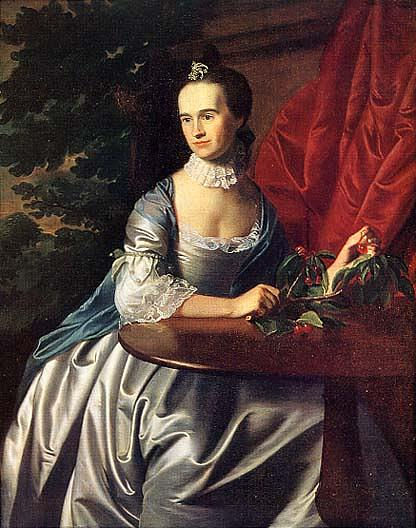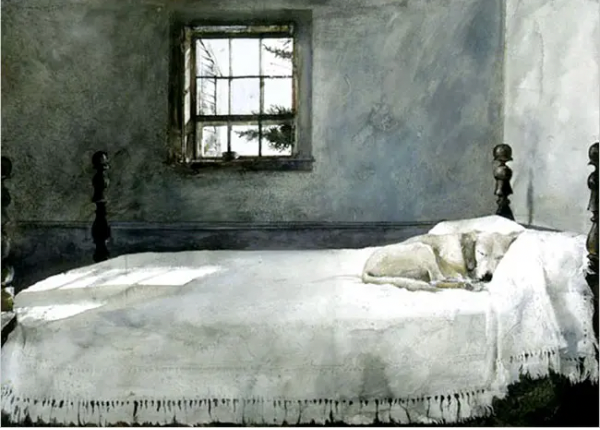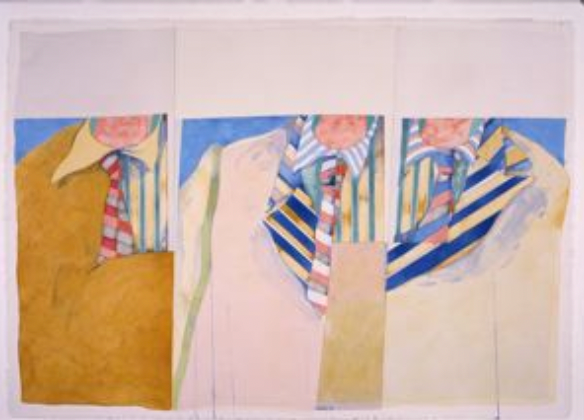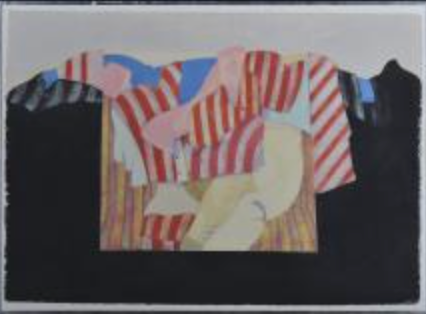This series will introduce artists associated with certain states. This is Maine.

Robert Feke
c. 1705 - c. 1752

An artist not born in Maine, but painted many landowners in Maine including the wealthy Waldo family, who made fifteen trips abroad to bring settlers to the Penobscot region.
Like others among his peers, Feke lived in Boston, but as with other painters, he was sought out by the wealthy landowners in New England, who would have their portraits done to show their wealth and prosperity for all to see.
Born in Oyster Bay, Long Island, these artists honed their skills with the ability
to render gold embellishments and silk or fur textures of clothing that gave the viewer a sense of noble stature that was relished and expected.

John Singleton Copley
Active in both colonial America and England, Copley became well-established as a portrait painter of the wealthy in colonial New England; Copley was the greatest and most influential painter in colonial America, producing about 350 works of art.
Mrs. Waldo lived in Maine but would have had to travel to Boston to see her father, the wealthy shipowner and merchant John Erving, and her older sister, Mrs. James Bowdoin II (wife of the 2nd Governor of Massachusetts). Copley was at the height of his career in New England and built a reputation in Maine and Boston, Massachusetts.
The next artist is more well-known and a painting that my readers will probably be familiar with.
Andrew Wyeth
1917 - 2009

In the stark landscape of coastal Maine, Christina’s World depicts a young woman seen from behind, wearing a pink dress and lying in a grassy field. Although she appears to be in a position of repose, her torso, propped on her arms, is strangely alert; her silhouette is tense, almost frozen, giving the impression that she is fixed on the ground. She stares at a distant farmhouse and a group of outbuildings, ancient and grayed in harmony with the dry grass and overcast sky.
Wyeth’s neighbor Anna Christina Olson inspired the composition, one of four paintings by Wyeth in which she appears. As a young girl, Olson developed a degenerative muscle condition—possibly polio—that left her unable to walk. She refused to use a wheelchair, preferring to crawl, as depicted here, using her arms to drag her lower body along. “The challenge to me,” Wyeth explained, “was to do justice to her extraordinary conquest of a life which most people would consider hopeless.”
As an art student, Wyeth was both praised and lambasted and this painting followed that criteria, as in this article For Wyeth, Both Praise and Doubt. My professors coughed when they had to refer to him, mocked him as an "illustrator" like Norman Rockwell, and pilloried Christina's World as a 'dorm room poster.' Wyeth had homes both in Chadds Forth, PA, and Maine. I was very familiar with his Maine subjects as I spent my summers with relatives who lived in the state.

Andrew Wyeth was the son of noted illustrator N. C. Wyeth. Andrew was called both a radical and old-fashioned.
He worked in an era that brought forth abstractionists like Jackson Pollock. Wyeth's work shown here certainly has a minimalist look, and it evokes a stark and lonely setting that is now recognized as an underlining theme of the younger Wyeth's work.
Winslow Homer
1836 - 1910

It sure looks like Maine. Homer was influenced by an 1884 trip to the Grand Banks fishing grounds, "The Fog Warning" is one of a series in which the artist depicted the difficult lives of New England sailors and their families.
At fifty, Homer had become a "Yankee Robinson Crusoe, cloistered on his art island" and "a hermit with a brush." These paintings established Homer, as the New York Evening Post wrote, "in a place by himself as the most original and one of the strongest of American painters.
Again, I summered in Maine during much of my young adulthood. These artists and others were part of my desire to learn about Maine artists, visit art museums in the area, and go on to study as an art student in Massachusetts and at Haystack Mountain School of Crafts. I was an apprentice in weaving crafts and jewelry making for several summers. Since these early days, the school has established partnerships with the likes of MIT whose programs seek to combine artists and scientists to take over the campus and explore the integration of emerging technologies and processes for the crafts.
Living Maine Artists
Rachael O'Shaughnessy
Perhaps best known for witnessing thousands of consecutive sunrises over the ocean and the resulting atmospheric drawings and paintings, Rachael O’Shaughnessy is passionate about ocean storms as they meet art. Rachael's recent luminist works echo the sublime works by J.M. W. Turner in her passion for color and light as they meet the Maine and New England coastline.
C. R. Bryant

For over 65 years, C.R. (Bob) Bryant has followed a lifelong journey to perfect his portrait painter and maritime artist ability. Known for his ability to paint water, Bryant also has a working knowledge of sailing ships, and today, he is recognized as a leading international marine artist.
He is a core artist at the Maritime Gallery at Mystic Seaport and a co-founder and senior fellow at the Pacific Rim Institute of Marine Artists.
Lastly, I give the nod to one of my professors in the Art Department at my alma mater, Westfield State Unversity:
Frederick Lynch
1935 - 2016
Having lost touch with Fred Lynch I was sad to see that he had passed in 2016. In my "freshman" year, it was Art History I, which he taught. I couldn't get enough of reading and analyzing the art from Caveman to Pollock. Professor Lynch played a role in my decision to go into teaching. He strongly impacted my future in later years when I chose to continue my education. I enrolled in the Art History program at the University of Massachusetts at Amherst, completing my Master's in that major.
He was one of the few professors who balanced his teaching responsibilities with being a "working" artist. He frequently had exhibitions on campus and encouraged his students to do the same. The art department was active on campus, and I am proud to have the foundation for my teaching career and my background in museum study and curatorship.
Here are a few samples of the works by Fred Lynch:


Books:
Pin it, Please. Comments below.




